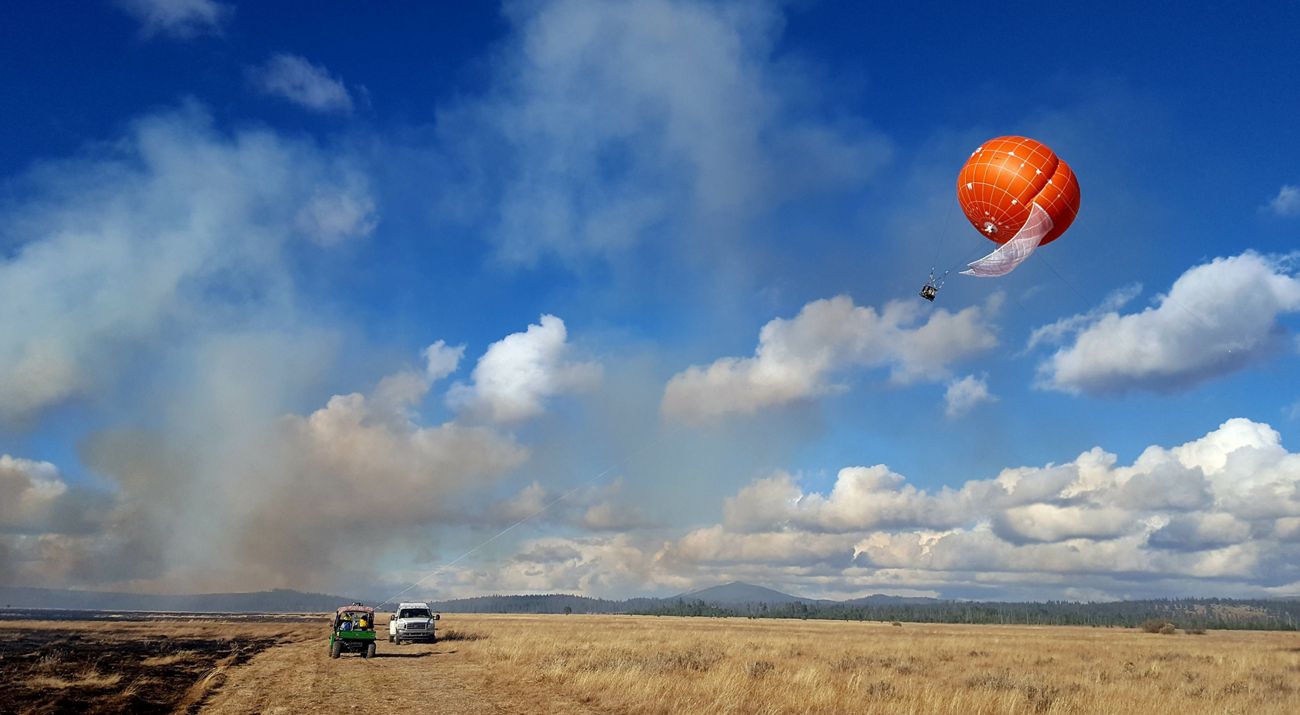Sycan Marsh Preserve: A Living Laboratory for Fire Research
Collaborative work on this remote TNC preserve is fueling an international effort to study fire behavior.
Some people might describe Sycan Marsh Preserve in southeastern Oregon as being in the middle of nowhere. But thanks to its remote landscape—and the dedication of Preserve Director Craig Bienz—Sycan Marsh is also the epicenter of an international effort to study fire behavior and improve the safety of wildland firefighters, people and communities around the world.
For the third year in a row, Bienz has invited a group of forest ecologists and fire practitioners, international researchers, scientists and Indigenous peoples to the far-flung preserve to conduct controlled burns, study fire behavior and collect data on everything from air quality to the ways in which climate change will affect forest restoration efforts in the future. The goal? To help inform how wildfires are handled and make forests and other landscapes in Oregon and around the world healthier and more resilient in the face of increasing wildfire threats. The key to success? “Collaboration,” says Bienz.
“The work we’re doing at Sycan Marsh Preserve to study fire and forest restoration is groundbreaking and important,” he continues. “But it’s the learning network that we’ve created that really excites me. We’ve assembled a diverse group of practitioners and researchers who are collecting and sharing data to help shape the way we prevent and manage fire around the world.”
Studying the Effects of Fire on the Ecosystem
Low-intensity fire plays an important role in the dry forests in Oregon (and in many landscapes around the world) and creates a necessary disturbance that many plants and animals need to thrive. But for the last 100 years, people have been extinguishing all wildfires. Bienz calls this “excluding fire from the landscape.” This exclusion has allowed undergrowth and small trees to grow unchecked, causing an imbalance in the system and leading to higher intensity wildfires that can destroy a forest rather than make it healthier.
When fire is present at regular intervals in a forest, as it was historically in Oregon’s dry ponderosa pine forests, interesting things happen in the ecosystem. "Tree bark thickens. The understory changes. New species appear. The needles and other elements of trees and plants change in ways that help them adapt to regularly occurring episodes of fire," says Bienz.
Quote: Craig Bienz
We’ve assembled a diverse group of practitioners and researchers who are collecting and sharing data to help shape the way we prevent and manage fire around the world.

We know that without fire, the forest becomes overgrown, unhealthy and more likely to experience a severe wildfire event. But without the challenge or disturbance of fire, do trees and plants also lose their survival skills? In turn, can we make them stronger and healthier by reintroducing regularly occurring fire?
Thanks to the work at Sycan, we may soon know. Since 2006, practitioners have conducted three cycles of controlled burns on a set of research plots, burning the plots every five years or so similar to what would have happened historically. “After the third burn in fifteen years, we’re seeing that the ecosystem has effectively been reset,” says Bienz. “The forest is thriving.”
“Our findings are revealing that in addition to reducing the risk of severe fire by getting rid of all that fuel, treating forests with prescribed fire makes trees healthier and helps them survive periods of drought,” says Bienz.
Putting Technology to Work
Increasing wildland firefighter safety and scaling up the restoration of fire-prone forests to match the need are other goals of this research. Because Sycan Marsh Preserve is owned by TNC, Craig is able to offer scientists the opportunity to test the latest in research technologies without having to acquire expensive or difficult-to-obtain permits.
“High-tech instruments such as drones and lasers have proven to be incredibly useful for studying things such as air quality and forest fuels on the ground,” says Bienz. “This work could help inform how forest managers and government agencies manage wildfires to keep people safer.”
Drones
Drones have opened up new possibilities for scientists and can provide us with important and quickly acquired information on fire and air quality during, before and after wildfires and restoration treatments such as controlled burns. The drone surveillance techniques tested at Sycan have the potential to keep people on the ground safer by relaying information to firefighters about a fire’s location in relation to communities, the severity of the fire, how fast it’s moving and in what direction.


Incorporating Indigenous Knowledge
Bienz is clearly excited about the science and technology happening at Sycan. But his eyes really light up when he mentions the relationships he’s formed with the Klamath Tribes by inviting them to participate in the research.
“We are learning valuable lessons from all of this data, but we also recognize that this is no substitute for the knowledge developed over centuries by Indigenous peoples,” he says. “Sycan Marsh Preserve is an historic site for the Klamath Tribes, who have a long history and culture tied to fire in the region. This work provides us the opportunity to ethically and effectively support and partner with them in creating a shared future of healthy lands, waters, and communities for all.”
As stated by one tribal elder: “We have embraced a history, a culture, and a need for forest management to create a sustainable forest landscape adapted to the needs, demands and objectives of the Klamath Tribes and the forest itself that provides for our culture, water, food, medicine and materials for survival as well as employment and economic gains for our people.”
Join Our Email List
Stay informed. Together, we can restore our forests and reduce the risk of severe fire.

